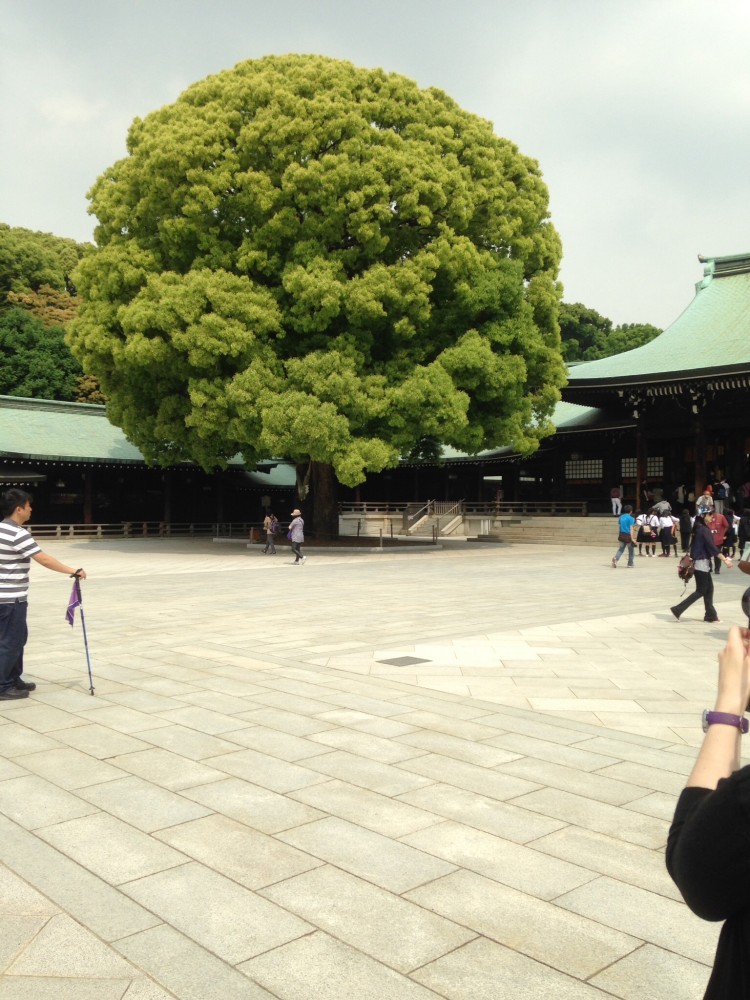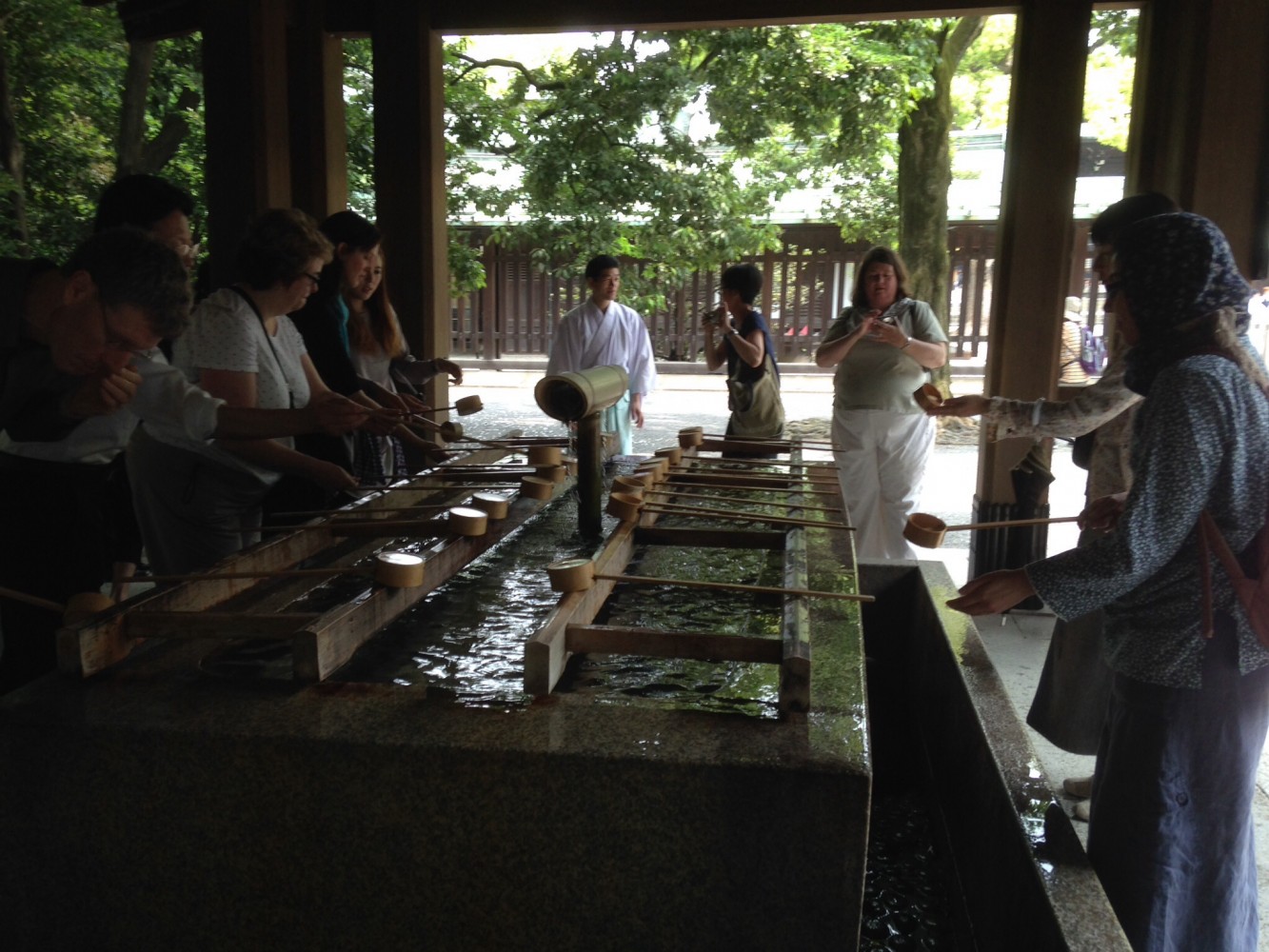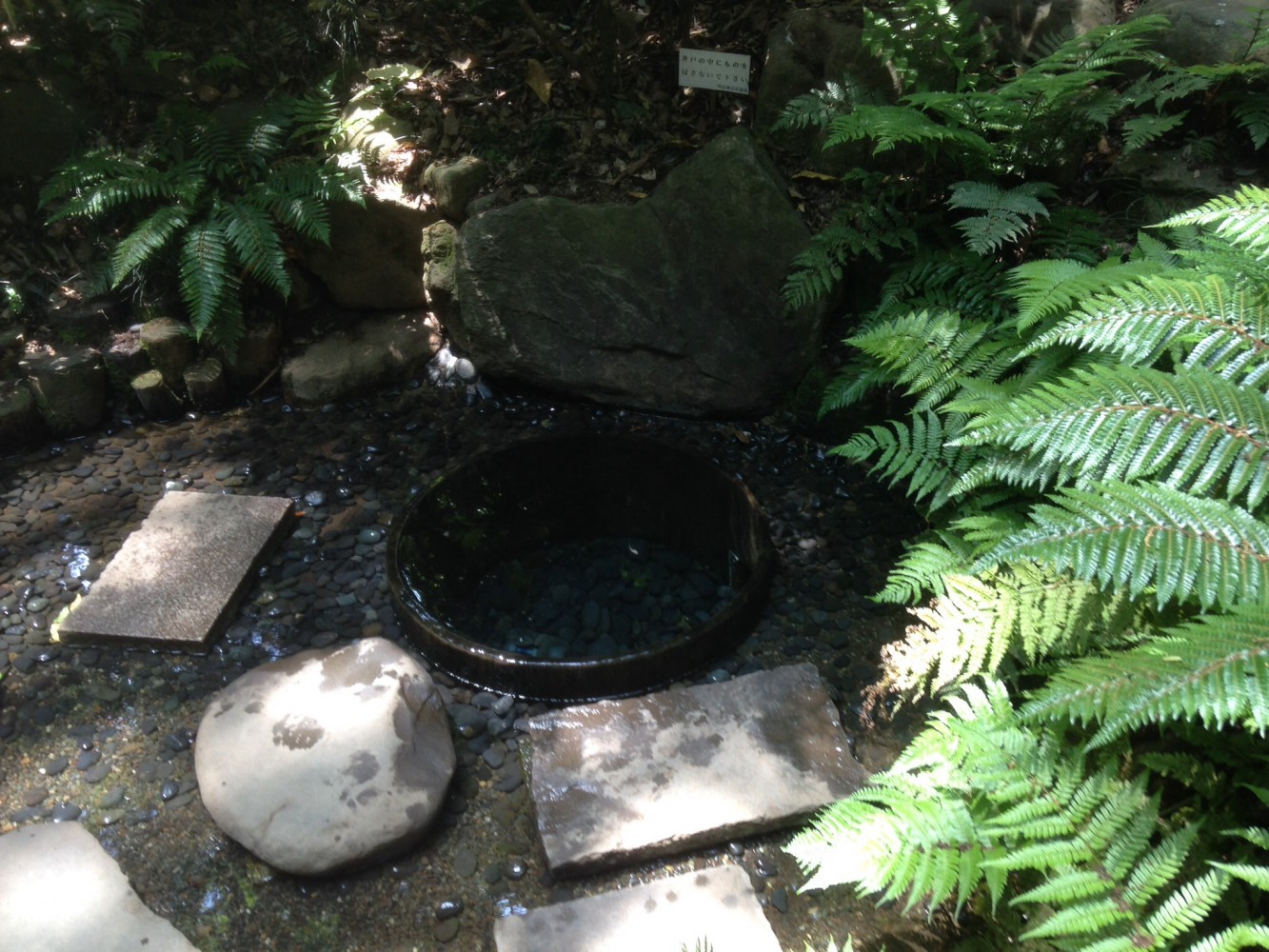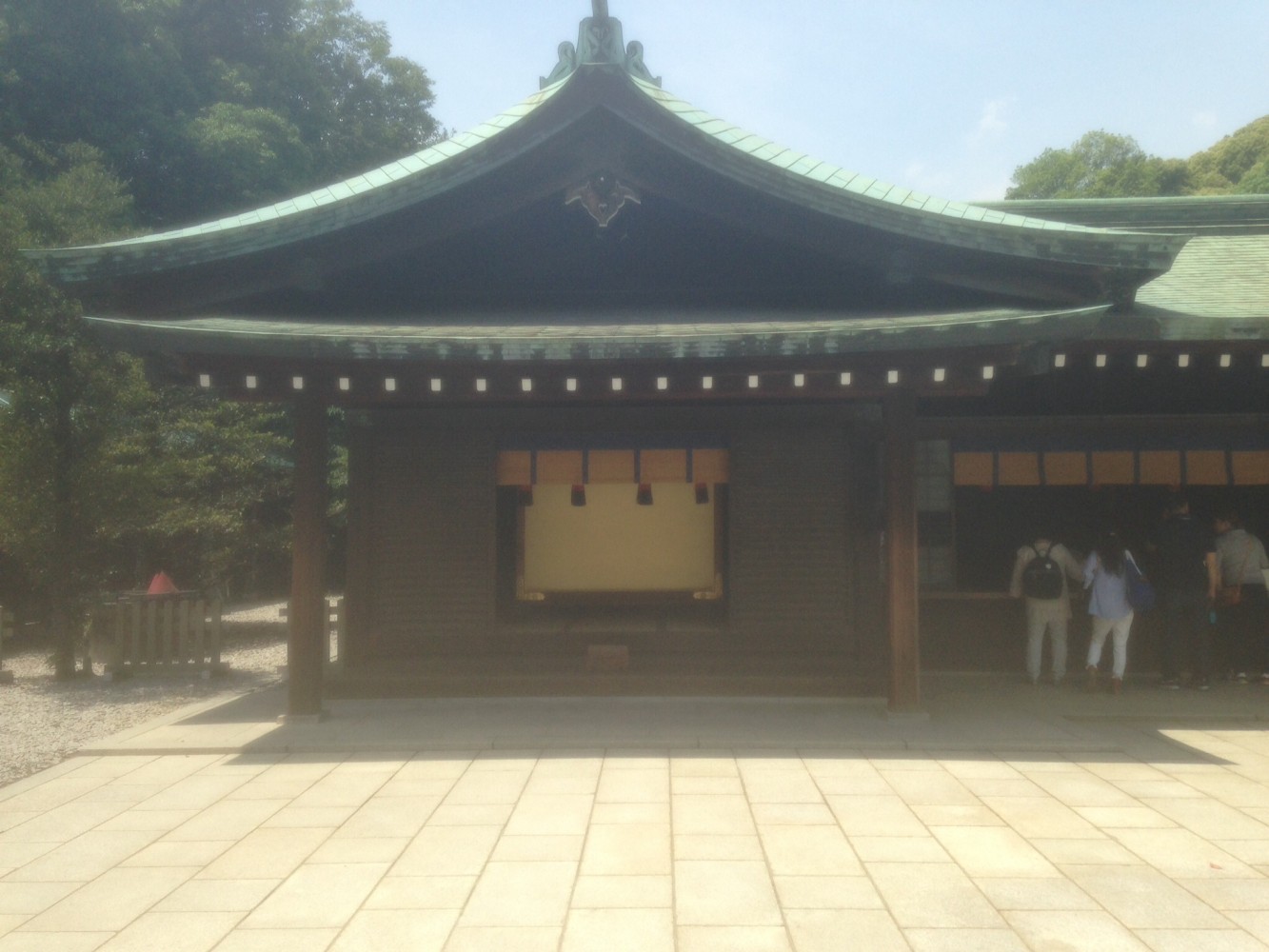Our day started with a bit of a mad dash to catch the bus so we would make it on time for our Meiji Shrine visit. The best part of running with a group of academics is that someone will think of good metaphor for the affair, and sure enough when got to the bus, panting, someone declared that we were like the big fish that the Oizumi elementary school children had described to us yesterday when talking about their group swimming experiences. We definitely have our group mascot!
We were met at the first torii gate entrance to the shrine grounds by Margaret Ng’s old college friend, Moriyasu Ito, who is now a priest at the shrine.
What a gracious and generous host he was all morning! As we walked up the long , broad, gravel walkway to the Shrine, he answered all our questions, and told us about the history of shrine, which was built starting in in 1920 to house the kami , or divine spirit, of the Emperor and Empress Meiji. Seeing such a large, green space right in the middle of one of the largest and busiest cities in the world is quite a reminder of the construction and power of sacred space. The majestic trees, planned by forestry experts and planted by the people of Japan during the construction of the shrine, really take you away.
Moriyasu Ito taught us how to purify ourselves before entering the shrine grounds by rinsing our hands and mouths with water, and we proceeded in to observe several ceremonies and to be blessed by the priests ourselves.
We could not take any pictures of the actual ceremonies we witnessed. Watching the carefully orchestrated, beautiful movements of the priests and shrine maidens was fascinating, a ritual theater for the senses. We also were treated to a presentation on the Shinto religion by Moriyasu Ito, who, with the help of a DVD, told us about Japan’s mythic history, the kami, the role of nature in Shinto, and the religious makeup of Japan.
Moriyasu Ito then led us on walk through some more of the grounds before wishing us well. We headed back into the city for more sightseeing and a well deserved, and amazing lunch!
It was unique experience, and one that helps me think more carefully about the ways I as a religious studies scholar have thought about and taught basic ideas such as sacred space, and divisions between the sacred and the secular. Although Japanese people seem to construct the religious in much different ways than many Americans do, and while many Japanese people will say they have no religion, Meiji Jingu clearly demonstrates the central role of religious ideas and practices in Japanese national life.








